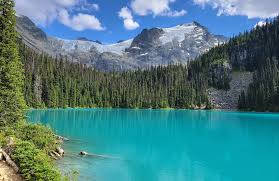Exploring Joffre Lake: A Natural Wonder in British Columbia

Introduction
Joffre Lake, located in the heart of British Columbia, is a stunning alpine destination that attracts hikers, photographers, and nature enthusiasts from around the world. Renowned for its breathtaking turquoise waters and gorgeous mountain vistas, the lake has become increasingly popular in recent years. Its accessibility and picturesque trails make it an ideal spot for day trips and outdoor adventures, contributing significantly to the local tourism economy.
Geography and Description
Joffre Lake is situated approximately 30 kilometers southwest of Pemberton, nestled within the stunning scenery of Joffre Provincial Park. This park, designated in 1988, spans over 5,500 hectares and showcases the beauty of the Coast Mountains. The lake is glacier-fed, which accounts for its striking turquoise color, especially during the summer months when the glacial melt fills the lake. It is comprised of three lakes: Lower, Middle, and Upper Joffre Lake, each offering its unique charm and views.
Trails and Hiking
The hiking trail to Joffre Lake is well-maintained and spans approximately 10 kilometers with a moderate difficulty level. The route features several viewpoints, allowing hikers to appreciate the striking landscapes along the way. A key highlight of the hike is reaching the Upper Joffre Lake, where visitors can enjoy panoramic views of the glacier and surrounding peaks. According to the BC Parks data, the trail has become more popular over the years, with visitor numbers increasing as local tourism boards promote outdoor activities post-pandemic.
Environmental Impact
With the surge in visitors to Joffre Lake, maintaining the delicate ecology of the area has become increasingly important. Environmentalists have voiced concerns about the potential for overcrowding and its impacts on wildlife and plant life. To address these issues, British Columbia Parks has implemented a variety of measures, including trail maintenance, educational programs for visitors on responsible hiking, and monitoring the health of the area’s ecosystems. This approach aims to balance tourism with conservation, ensuring that the natural beauty of Joffre Lake can be enjoyed for generations to come.
Conclusion
As Joffre Lake continues to gain popularity as a must-visit destination in British Columbia, it highlights the importance of sustainable tourism practices. While it offers breathtaking views and outdoor experiences, it is crucial for visitors to respect the environment and follow park guidelines. Future projections indicate that the area will continue to attract more visitors, prompting ongoing efforts for environmental stewardship. Whether you’re an avid hiker or a casual nature lover, Joffre Lake undoubtedly deserves a place on your travel itinerary.









